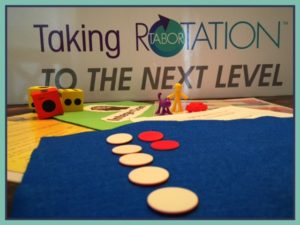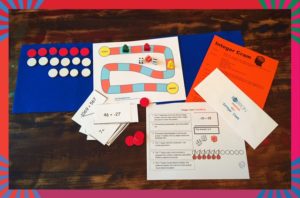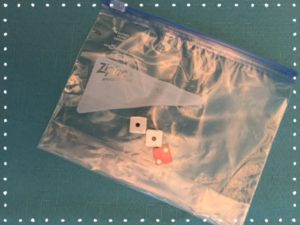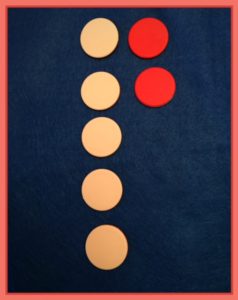
Integer: a number with no fractional part; includes the counting numbers {1, 2, 3, …}, zero {0}, and the negative of the counting numbers {-1, -2, -3, …}
The term integer is not typically used in a secondary student’s everyday life. There’s no shortened version for texting it. Why? Let’s face it, secondary students use integers in math and science and then forget about them. Or, so they think. They actually use integers all the time and will need working knowledge of them for the rest of their life!
I like the real-world examples on VirtualNerd.Com. I’d recommend their video, too. It gives a simple, but effective explanation of integers.
- 30º drop in temperature -30
- $450 deposit into an account +450
- A weight loss of 5 kilograms -5
As students study integers, we can make them aware of integer terms they use every day.
Negative: decrease, fall, drop, loss/less
Positive: increase, add, more, deposit
Engaging Students with Integers
We can also help build a deeper understanding of integers by using activities such as Integer Cram in our math stations or in guided math instruction.

Entire game is FREE on FREE MATERIALS page! Just join the Tabor Team. (Joining is FREE, too)
This game has pairs of students take turns rolling two white or yellow number generators and one red number generator.

Cutest and quietest way to roll dice

Best way to roll dice
 After rolling, all pairs of students represent what was rolled using 2-color counters. I recommend that students use a felt mat to define their space and muffle the noise.
After rolling, all pairs of students represent what was rolled using 2-color counters. I recommend that students use a felt mat to define their space and muffle the noise.
All the pairs record the steps they used to combine the integers and determine the number of spaces they may move. As you can see on the Integer Cram Recording Sheet below. This activity personalizes the math instruction by giving the students a chance to create their own problems to solve.

The pair that rolled moves their game piece the combined total number of spaces–if they can explain how they arrived at their answer and everyone agrees. This encourages the math conversation and discourse–which leads to a deeper understanding since their thinking was verbalized.
Play continues with the next pair of students.
Game pieces make it more fun & personalized
Integer Cram does it all!
This engaging, interactive activity/game takes the understanding of integers from concrete (2-color counters) to pictorial (drawing the counters and the dice on the recording sheet) to abstract (writing the number sentence used to combine the integers rolled). You can place it in a math station (used in Phase 2 of the Tabor Rotation Framework), use it in guided math, or play the game with your entire class divided into teams.
Integer Cram Video on YouTube
A “How to Play Integer Cram” video is on my YouTube Channel. (There are just a few videos now, but be sure and subscribe to my channel. We’re working every week to add a video for each of the FREE activities in my FREE RESOURCES section of my website at both the elementary and secondary level.)

The Integer Cram video teaches your students how to play the game
This blog post is going to end on a positive note,
“Mathematics is not about numbers, equations, computations, or algorithms: it is about understanding.” William Paul Thurston
And, a couple of funny ones…



